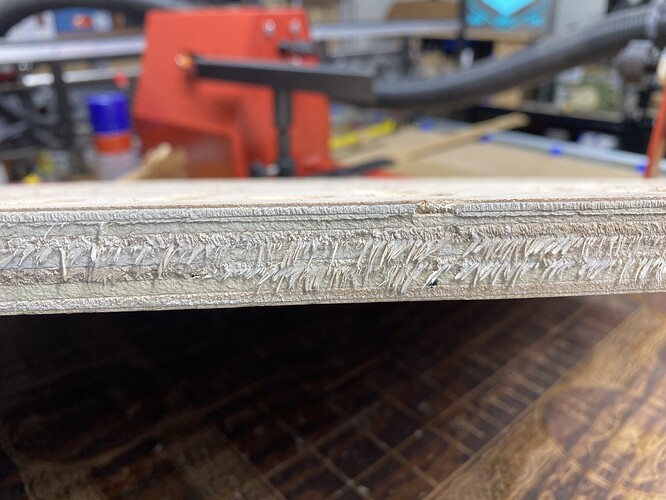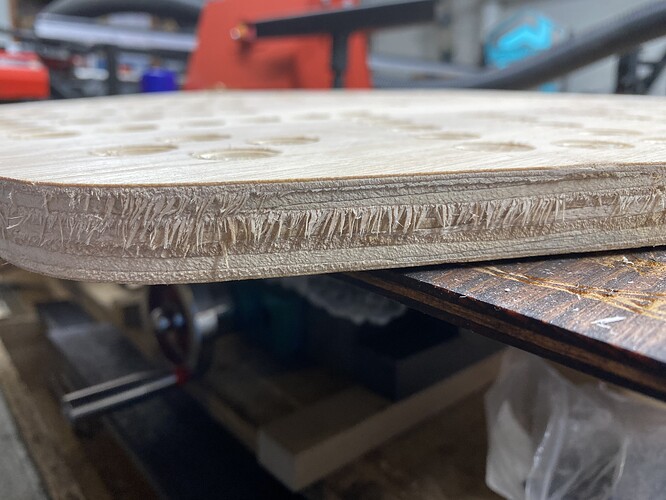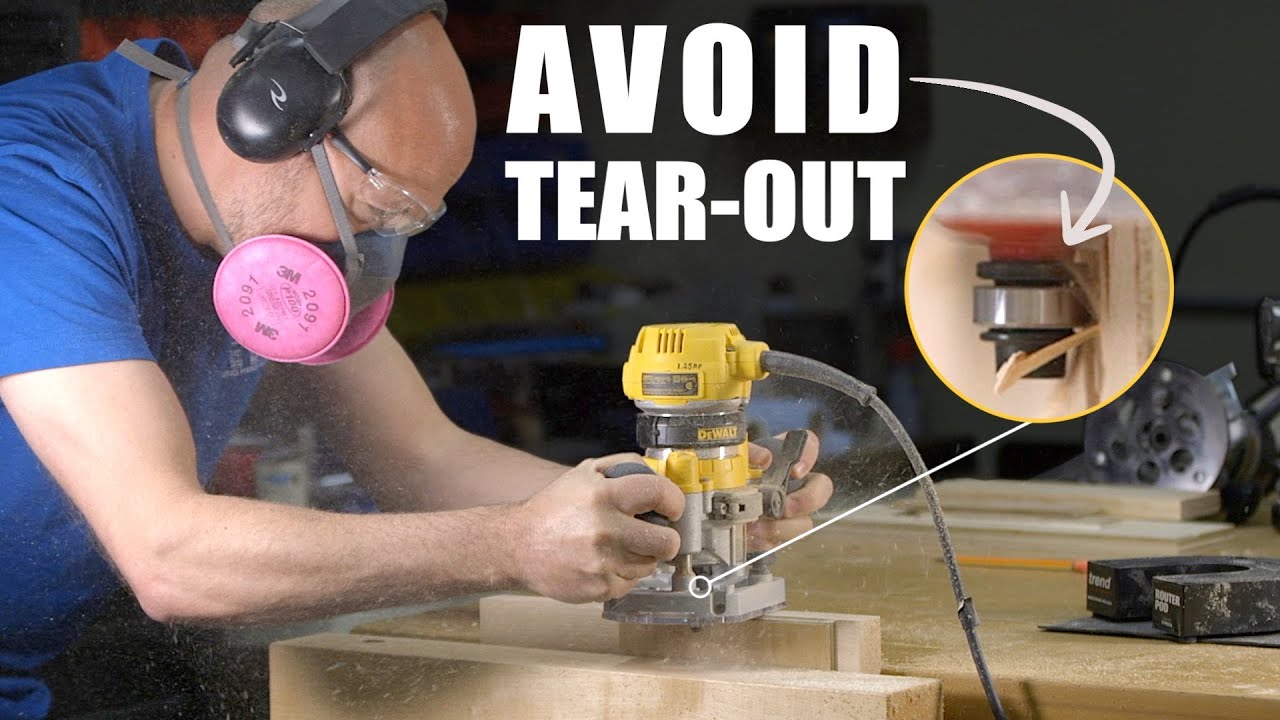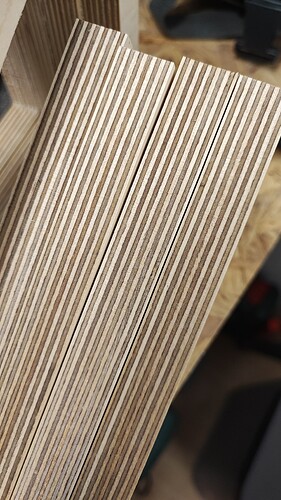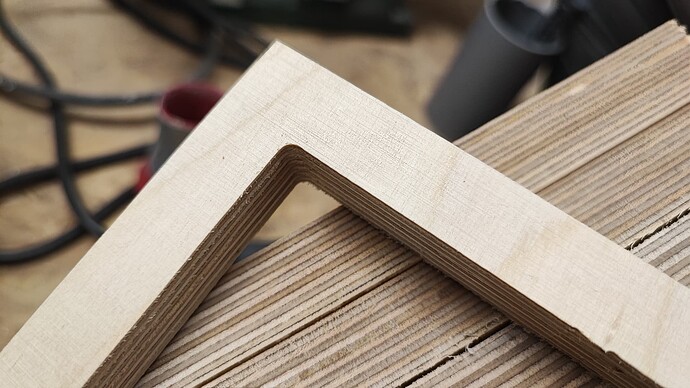Or maybe I should say - how to prevent furry edges - while CNC cutting hardwood plywood?
Is this with a finishing pass (e.g. 5%) ? And/or compression bit if you’re experiencing tear out?
Curious how your laser (100W CO2 ?) compares speed, and accuracy wise to your LR3 CNC?
Hmm. It’s been a while since these were cut. I default to including a finishing pass pretty much all the time, so I would guess it did get one, but not 100% certain. May check my files to see.
I think all my bits are either up cut, or straight cut.
The 100W CO2 laser is great for accuracy, and I’ve cut up to 1/4" thick oak hardwood with it, but I’ve not tried it on cutting these big thick game boards for two reasons; the plywood is 3/4" — and the design calls for cutting 8 “interlocking” hexagons per full sheet, and only my LowRider 3 table is big enough to do that big of a cut project.
Here’s a video I found on the topic. Not sure how much this would help, as I think I default to “climb cut” on pretty much all my LowRider cuts.
-
Sand paper. Would remove them real quick. 200 grit of adhesive backed paper on a scrap block nearby would be the perfect tool.
-
Are your bits sharp? It looks like those wood fibers were crushed instead of cut. The bit geometry is even a bit suspect. Maybe it is just far closer than I am used to looking
 .
.
This is a hardwood plywood. Not sure if that’s the reason, but they are surprisingly resilient. When I’ve used sandpaper, it has made the fuzzies fuzzier. I guess I just need to be firmer with it. Or maybe I wasn’t using a rough enough grit.
That may well be, however, I was using relatively new bits, and they seemed sharp. ?
I would start there. Try 120 or 80 not lower though. The other things you can do if you have an extra router is to take a flush cut bit and use that on both faces. If you have a sharp chisel or hand plane you could try one of those just be careful around the edges.
Make sure when sanding (especially hardwoods) to make sure the paper is clean and/or in good shape
@jeffeb3 is right. My previous sanding was not rough enough grit and not firm enough. I just knocked them off with more firmness and rougher grit.
I just dealt with a bunch of this cutting 12mm birch plywood. Fuzzies on everything. I used 120 grit on a sanding pad and it would clean it up. But as soon as I sprayed a layer of paint they would come back. Less but still there. It was extremely annoying lol. I did try a compression bit and it was no better at all. The top layer would be better but that part is easy to sand off. It didn’t help with the sides at all
These are my edges directly after cutting, no finishing passes or sanding:
So I’d say the bit might not be too sharp maybe? This was using conventional, and a 1-flute upcut, I since switched to climb. You can see that on the outside there is no fuzz at all, but on the inside there is. So climb/conventional definitely makes a difference. I have never had any probles with the burr endmills either, but they do not work too well pretty often.
Thanks everybody, for the helpful input.
Spritz the edges with water after the initial sanding. It will pull up the fuzzies. Then sand again.
What’s happening is your spray paint is lifting the fibers.
This looks like what we would call “baltic birch” plywood. It is very high quality and I suspect that makes a difference too. When I use that, it cuts like sugar cookie dough. The thin even hard layers help.
